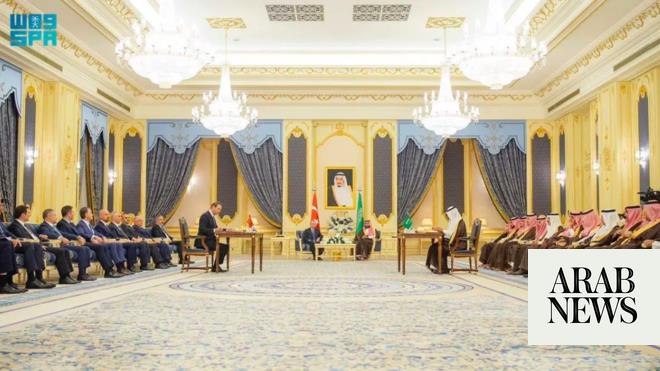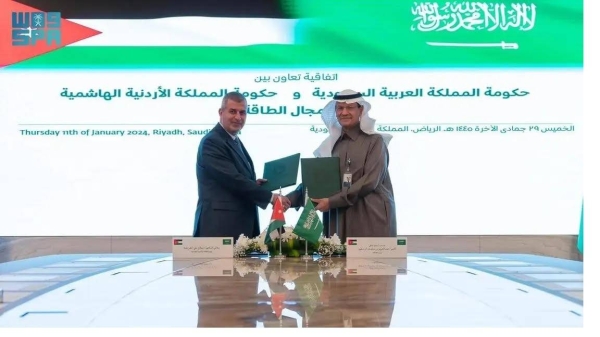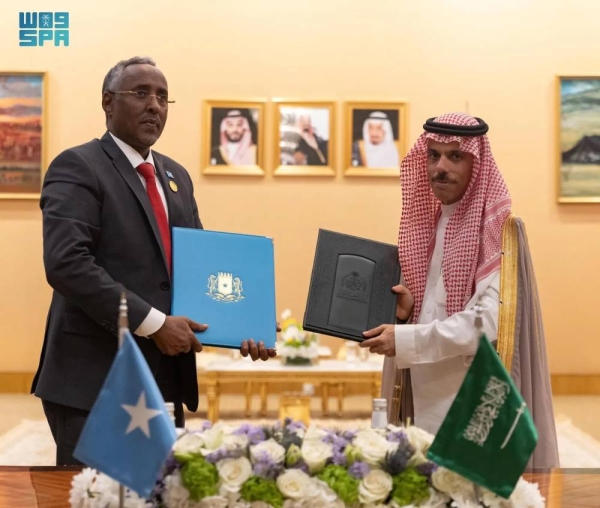
RIYADH: Saudi Arabia and the Philippines have signed their first agreement on energy cooperation, marking a milestone in their bilateral relations and supporting the Kingdom’s sustainability drive.
The memorandum of understanding, signed by Saudi Energy Minister Prince Abdulaziz bin Salman and the Southeast Asian country’s Energy Secretary Raphael Lotilla in Riyadh, aims to establish a broad framework for collaboration across various energy sectors.
The agreement encompasses critical areas such as petroleum, natural gas, refining, and petrochemicals, as well as electricity, renewable energy, and energy storage solutions. Both nations are committed to enhancing energy efficiency initiatives as part of their joint vision for a sustainable future.
This comes as Saudi Arabia aims to generate 50 percent of its energy from renewable sources by 2030.
In an interview with Arab News, Lotilla stated that this is the first time that such an agreement is being signed between the two governments.
“The MoU as a framework covers many areas; in fact, the entire scope of the energy transition. Our ambitions are not at the same levels; we are a bit behind because it’s 50 percent by 2040, so we have much to learn from Saudi Arabia,” he said.
The official added: “Our president was always impressed with the fact that even if Saudi Arabia is, right now, the leader in terms of fossil fuel production, it has a progressive outlook and is looking at the transition that would benefit not only itself but also the planet.”
Lotilla highlighted the Philippines’ demographic advantage, describing the nation as being in a “demographic sweet spot” due to its young and expanding workforce, projecting that it could become a trillion-dollar economy by 2030, alongside Indonesia and other regional leaders.
This energy partnership builds on robust existing ties, with Saudi Arabia hosting around 800,000 Filipinos and bilateral trade being valued at over $400 million annually. The MoU seeks to extend collaboration beyond fossil fuels, incorporating new technologies, climate solutions, and renewable energy initiatives.
“We are looking, for example, at the energy efficiency and conservation measures that Saudi Arabia has adopted,” Lotilla said, pointing to cooling systems as a vital area of focus.
Both countries experience high energy demands driven by extreme temperatures, with El Niño pushing electricity demand in the Philippines up by 14 percent last year.
The agreement emphasizes climate change mitigation technologies and endorses the Circular Carbon Economy framework promoted by Saudi Arabia, which aims to reduce toxic emissions through capture, reuse, storage, and transport technologies.
“Energy storage is also another area that we would like to explore with Saudi Arabia,” Lotilla said.
He continued: “We hope to discover more indigenous natural gas, and carbon capture, storage, and utilization are important as we develop those indigenous sources. These are just among the things that we are looking at.”
Additionally, Lotilla indicated that the agreement lays the groundwork for investments in renewable hydrogen projects. “The experience of Saudi Arabia when it comes to oil and gas exploration would be important because it uses essentially the same technology, except that it is renewable hydrogen that is going to be drilled for,” he said.
The potential for biofuels is significant, given Saudi Arabia’s refining capabilities and the Philippines’ agricultural resources. Lotilla noted the possibility of producing sustainable aviation fuel from nonstandard coconuts, as the Philippines produces 15 million metric tonnes of coconuts annually — second only to Indonesia.
The government is also exploring the use of banana biomass for biofuel production, opening up avenues for additional investments.
Lotilla stressed the critical need for infrastructure development, particularly in transmission networks, saying: “The Philippines is an archipelagic country, and we need to connect the different islands through submarine cables. One area of investment is in building that infrastructure, and that’s where the investor can also get fair returns.”
The MoU fosters private sector cooperation, encouraging partnerships with energy-focused companies and reflecting both nations’ intent to leverage business expertise to drive innovation and development.
The flexible nature of the agreement allows both countries to pursue additional collaboration areas, ensuring a responsive approach to emerging energy trends and challenges.
The Philippines is also seeking Saudi Arabia’s assistance in achieving 100 percent electrification in the Bangsamoro Autonomous Region for Muslim Mindanao, which currently has less than 50 percent household access to electricity.
Lotilla emphasized the significance of this initiative for economic and human development, saying: “This would require some $200 million of investments, and we are trying to attract private investors as well as sovereign funds to help us attain that 100 percent electrification goal by 2028.”
He added that electrification would significantly impact student learning and workforce productivity, helping to uplift one of the country’s most impoverished regions.
In another interview with Arab News, Rommel Romato, chargé d’affaires of the Philippine Embassy in Riyadh, stated that the agreement creates numerous promising economic opportunities for Filipino businesses.
“With this MoU, we expect to achieve better outcomes, particularly an increase in exports from the Philippines to Saudi Arabia and for the Philippines to tap into the vast Saudi market. We also anticipate more joint ventures between Philippine businesses and their counterparts in the energy sector, among others.”
Beyond energy
Both countries are exploring collaborations in agriculture, technology and tourism, as well as healthcare and education.
Lotilla acknowledged that current bilateral trade between the Philippines and Saudi Arabia exceeds $400 million annually, though the trade balance currently favors the Kingdom, which exports more to the Asian country than it imports.
This trade imbalance stems from Saudi Arabia’s primary exports to the Philippines — including petroleum and related products — while the Philippines exports agricultural goods and services of lower monetary value in comparison.












